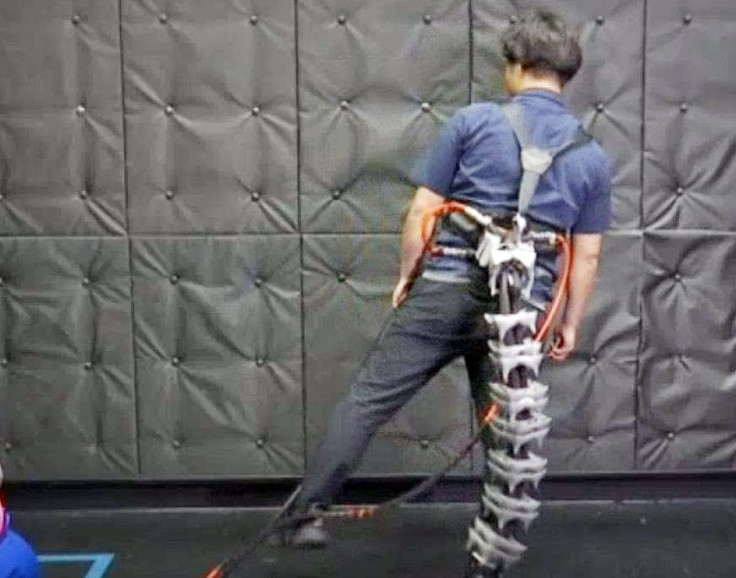Japanese Researchers Develop Robotic Tail To Keep Elderly From Falling Over

It’s a really weird solution to an age-old problem, but would you have your aging mother, father or grandparents wear a “robotic tail” so they can keep their balance?
Researchers at the Keio University in Tokyo, Japan are betting you will -- if you’re a senior citizen with arthritis or balance problems. They’ve built and are testing a robotic tail they’ve named “Arque” to help unsteady elderly people maintain their balance to prevent accidents such as stumbling or falling down.
Gray in color, the one meter long flexible device uses four artificial muscles and compressed air to move in eight directions. Arque mimics tails such as those of cheetahs and other animals used to keep their balance while running and climbing.
“The tail keeps balance like a pendulum,” said Junichi Nabeshima, a graduate student and researcher at the university’s Embodied Media Project. Nabeshima displayed Arque attached to his waist with a harness.
“When a human tilts their body one way, the tail moves in the opposite direction,” according to Nabeshima.
One in three Japanese is over 60 years old, making Japan the “grayest” country on the planet. Japan’s aging population brings with it the need to care and protect its tens of millions of senior citizens.
Arque is a technological solution to keeping Japan’s elderly mobile, productive and safe from some forms of accidents common to old people, like slipping and falling over.
Apart from helping Japan’s elderly move around, Arque also has industrial applications. It could help workers carry heavy loads by keeping them well balanced.
"I think it would be nice to incorporate this further-developed prosthetic tail into daily life, when one seeks a little more help balancing," said Nabeshima.
But it seems too much to ask frail senior citizens to wear a tail. Think of the ridicule. But again a robotic tail might not be as offensive as it sounds given the alternative, which is staying sedentary.




























